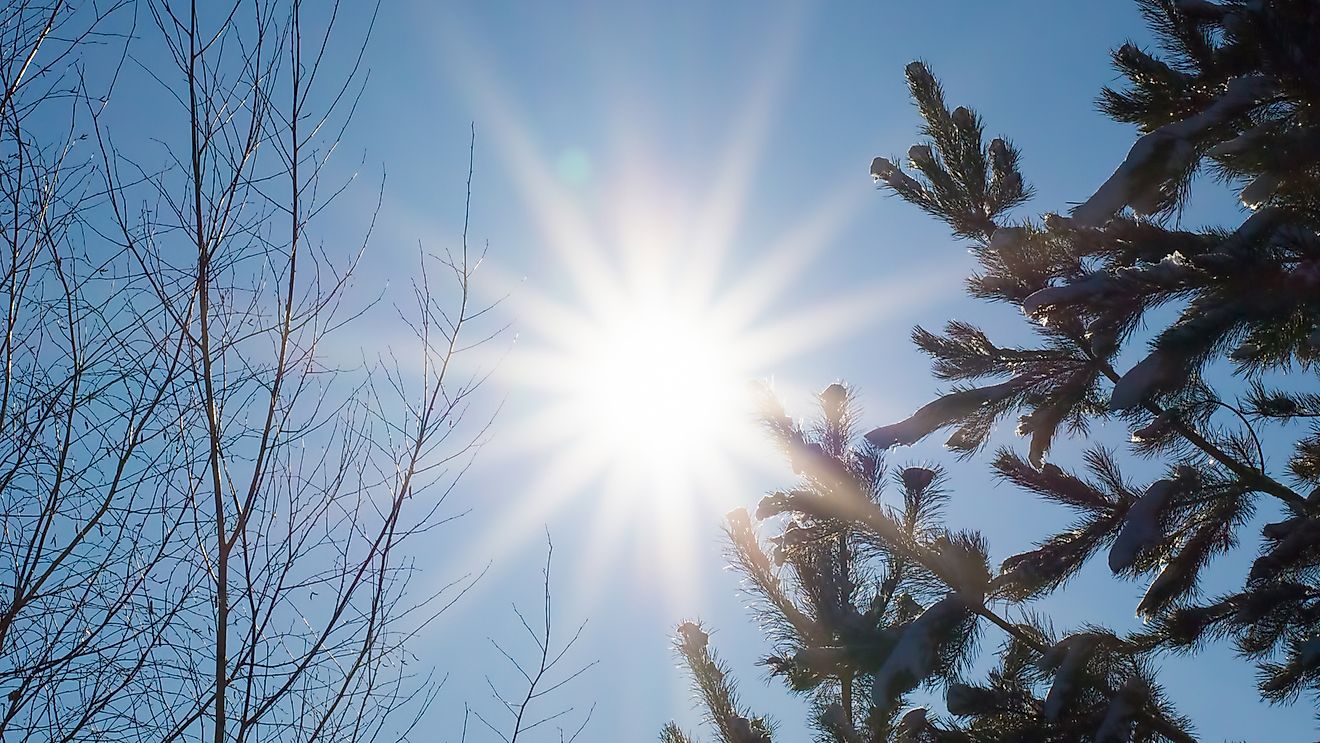Here's What to Expect On The Winter Solstice

For each hemisphere, Winter Solstice is the date with the shortest period of daylight and longest night of the year; it is the day when the Sun has its lowest maximum elevation in the sky, never even appearing over the horizon at the pole.
What Is The Winter Solstice?
The term “solstice” comes from the Latin scientific word “solstitium,” poetically meaning “when the sun stands still.” The relative to the horizon position of the Sun at noon, which usually changes throughout the year, appears to “pause” in the days closest to the Solstice. The Solstice, the same as winters and summers in general, is caused by Earth’s orbiting motion around the Sun and the planet’s axis tilt (not the distance from the Sun!). Because Earth does not circle the Sun “upright” but is tilted on its axis by 23 1/2 degrees, Earth’s Hemispheres “trade places” in receiving the Sun’s light more directly and “leaning away” from it. Since prehistory, the Winter Solstice has been marked by festivals and rituals. The air is clearer, the sunsets are longer, and the stars appear less blurry. And after the Winter Solstice, the Sun will be up longer and longer, gaining from several seconds to more than a minute every day depending on the location, and nights will become shorter.
Does The Solstice Happen At The Same Time For Everyone?
For everyone on Earth, the Solstice occurs at the same instant. But to make things slightly more complicated, Solstices are reversed on either side of the equator. At the Winter Solstice of the Northern Hemisphere, the North Pole in 24-hour darkness, and the South Pole enjoys 24-hour daylight. When the Northern Hemisphere celebrates its Winter Solstice, it is the Summer Solstice - the longest day of the year - in the Southern Hemisphere, and vice versa. Northern hemisphere celebrates Winter Solstice in December; Southern - in June. Northern has the Summer Solstice in June, and Southern - in December. Yes, in Australia, June is a winter month!In Universal Time Zone, Winter Solstice typically occurs on December 21st, only switching to December 22nd every four years. For example, the last Winter Solstice of the past decade occurred on December 22nd; it means we can now expect three years of the 21st being the shortest day in the Northern Hemisphere. In countries following the astrological calendar, Winter Solstice marks the first day of the celestial winter.
What Can We Observe During The Winter Solstice?
At noon on the Winter Solstice day, the Sun appears directly overhead at the Tropic of Capricorn (the imaginary line encircling the globe) but remains below the horizon at the North Pole. The Sun on the Northern hemisphere’s sky’s dome reaches its farthest southward point for the year, and its arc across the sky is lower, even at noon. Because of this, around the time of the December solstice, we have the longest noontime shadows of the year.The shortest and the longest daylight are not “equally short” everywhere: the closer to the respective pole you live, the shorter your shortest day on your Winter solstice, and the longer your longest on the Summer one. Around the equator, the days are always long, and the difference between the two local solstices is insignificant. But somewhere in Alaska, the difference is immense!











